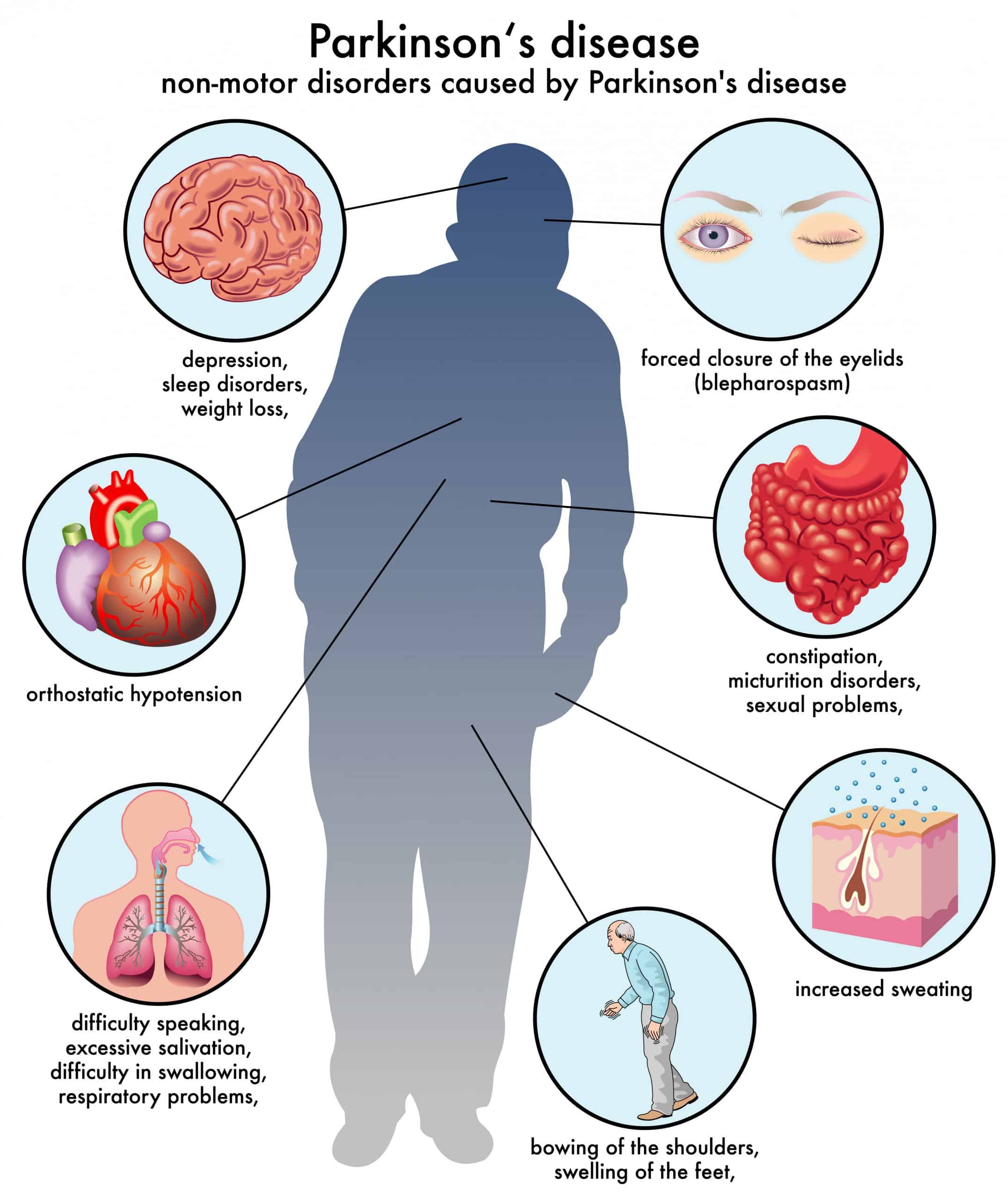What is it?
Parkinson’s Disease, and the family of Parkinsonian disorders that include Levy Body Dementia, are a group of neurological conditions affecting a portion of your brain known as the Basal Ganglia. One of the most important functions of this area of the brain is to regulate the magnitude of muscle use unconsciously. Essentially, when this area of the brain is not processing stimulus correctly either from not producing or receiving a chemical called dopamine correctly, the brain outputs less strong messages to the areas of the body it is directing to move. This can result in smaller steps seen in the more typical shuffling gait pattern, difficulty catching yourself when you fall as the brain cannot create a big enough movement to compensate automatically, smaller handwriting, and quieter voice. You may also see difficulty turning quickly, or even crossing a doorway as this area of the brain cannot produce or process these messages normally.
Treatment
This family of disorders often has a twofold approach. While medical management of dopamine with medications or implants can help, often the plasticity of the brain will give these treatments a distinct lifespan of use prior to the brain adapting against them. To prolong independence, treatment like physical therapy or speech therapy targeted to helping the brain consciously attend to the functions being affected can allow for improved movements as conscious processes are controlled by an entirely different area of the brain! The neurological re education often involves emphasizing powerful movement strategies, and may include boxing, dance, or specific movement training to help patients get used to their movement style!
Important Facts to Know
This family of disorders is most often associated with tremors, however because of the movement dynamic involvement, fall risk is one of the largest factors we seek to address. Early intervention can help improve safety, and therapy is currently being considered a frontline defense, and when possible many cases this will be encouraged prior to starting medication so that we can maximize independence over the lifespan!

Who is at Risk for PD?
Scientists are still studying who may be at risk for Parkinson’s disease. There is correlation with family history, certain occupational hazards, and genetic factors.
How does PD present?
The main symptoms of Parkinson’s Disease include:
- Tremor (trembling) in hands, arms, legs, jaw, or head
- Stiffness of the limbs and trunk
- Slowness of movement
- Impaired balance and coordination
- Depression and other emotional changes
- Difficulty swallowing, chewing, and speaking
- Urinary problems or constipation
- Skin problems
- Sleep disruptions.
What are complications of PD?
As the disease progresses, there could be a number of changes that can occur which include:
- Increased difficulty in performing activities of daily living such as bathing, transfers, walking.
- Increased difficulty with swallowing
- Increased risk of respiratory infections
- Increased difficulty with speech
- Increased risk of falls
- Increased difficulty with performing tasks
How Physical Therapy can help treat those suffering from Parkinson's Disease
Physical therapy can help slow down the progress of Parkinson’s Disease to help the person be as functional as they can for as long as they can. They may recommend specific exercises to address balance deficits, as well as different tools to maintain safety around the house and in the community. Most interventions will be focused on large amplitudes, BIG motions that are over-exaggerated in order to combat the “smallness of movement” that is a key aspect of Parkinson’s Disease. If you or one of your loved ones is diagnosed with Parkinson’s disease, give us a call and one of our physical therapists will be able to make a comprehensive plan for your individual needs.